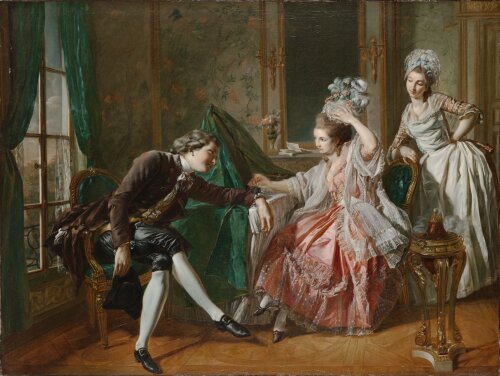Embedding a consumer revolution. Shifting value constructions and mental frameworks in auction advertisements in the United Kingdom, c.1730-1830
Why do new consumer patterns emerge, become popular or, rather, go unnoticed or disappear quietly? This has been one of the core problems in consumer historiography. The following project proceeds from the assumption that the choices or even desires of consumers stand in direct relation to prevailing values in society, or what is regarded as ‘fashionable’, ‘desirable’ or ‘proper’ at a certain time and place. Today, for example, ‘sustainability’ and its related semantic field are used by producers and retailers to distinguish themselves from their competitors and convince consumers to buy their products. In their advertisements, many brands claim to make conscious efforts to reduce, reuse and recycle because consumers attribute significant value to an active environmental policy. This project tackles this issue for the eighteenth century, a period of critical consumer transition.
Eighteenth-century consumer historiography, however, has already attested the importance of studying pervasive value notions such as ‘respectability’, ‘novelty’, ‘comfort’ and ‘pleasure’. However, the eighteenth-century explosion of products – initially referred to in British historiography as a 'consumer revolution' – reflects the increasingly complex and socially layered consumer society. As a result, the marketing of goods at that time would have required more categories and a more diversified terminology to describe the unique qualities of each product. By starting from the conceptual framework of the so-called convention theories, and methodologically supported by word embedding technologies, this project will identify pivotal words and phrases, and accompanying semantic shifts in contemporary sources (mainly auction advertisements) to discover and attribute shifting value constructions. This innovative combination of theory and methodology will shed new light on the underlying mental frameworks of consumer value constructions for the eighteenth-century United Kingdom.
This PhD-project is part of a broader project about material culture and consumer society in the eighteenth and nineteenth centuries under the supervision of Bruno Blondé, Bert De Munck, Mike Kestemont and Ilja Van Damme. 
Picture: Louis Rolland Trinquesse, Interior with a Lady, her Maid, and a Gentleman, 1776, oil on canvas
This painting showcases many eighteenth-century ideas of luxury and consumerism such as the white stockings, elaborate clothing design, intricate furniture and the lavish fabrics used in the dress, furnishing and on the wall.